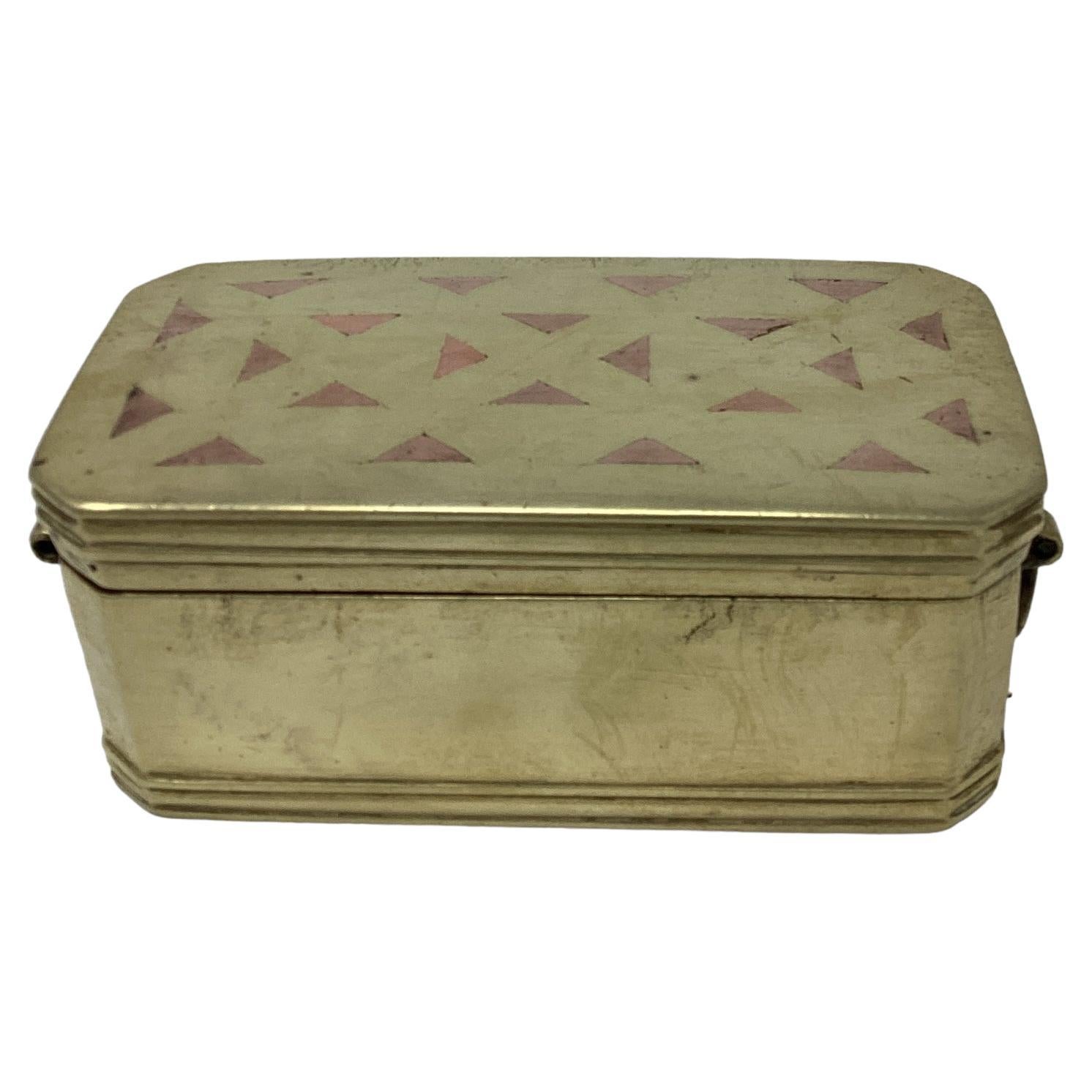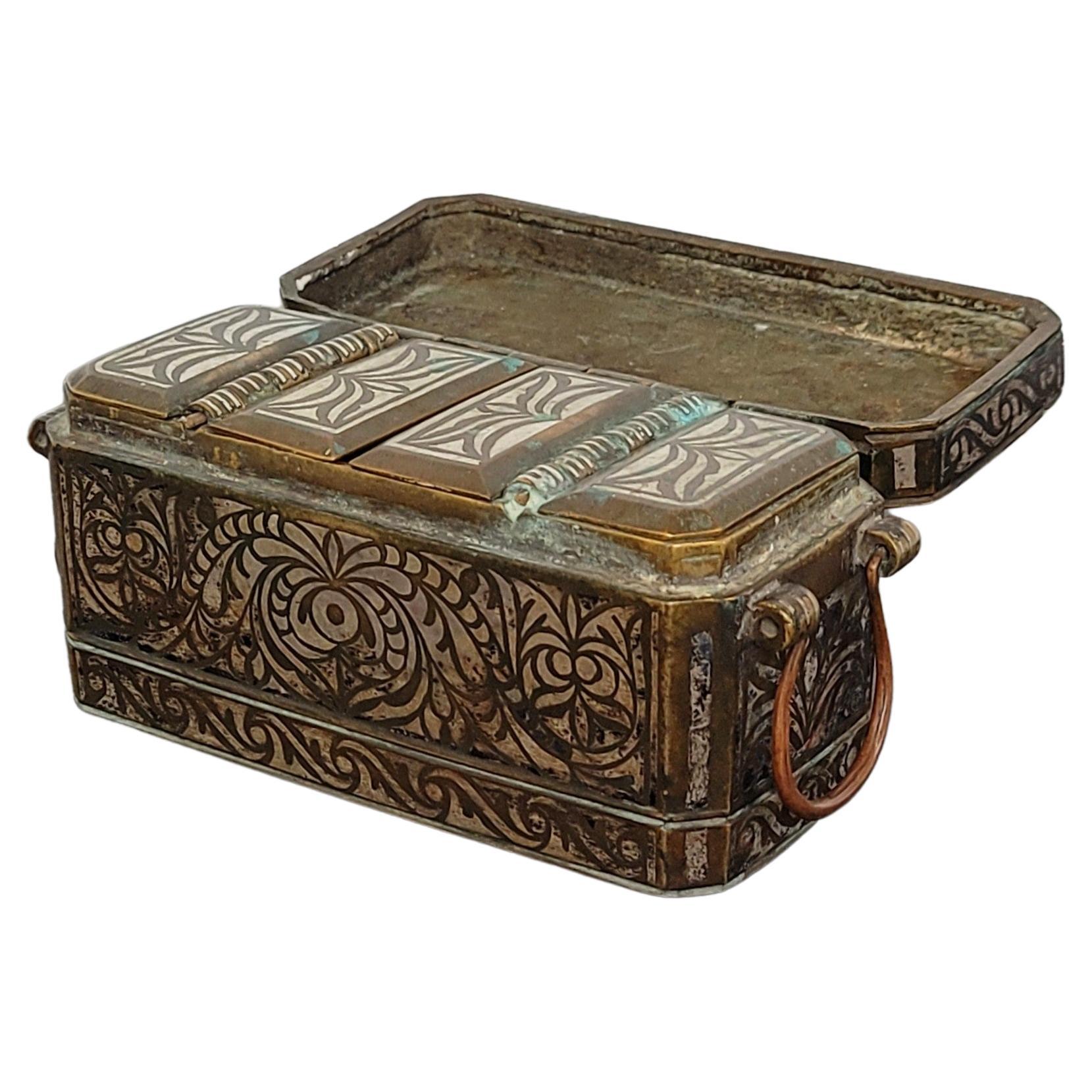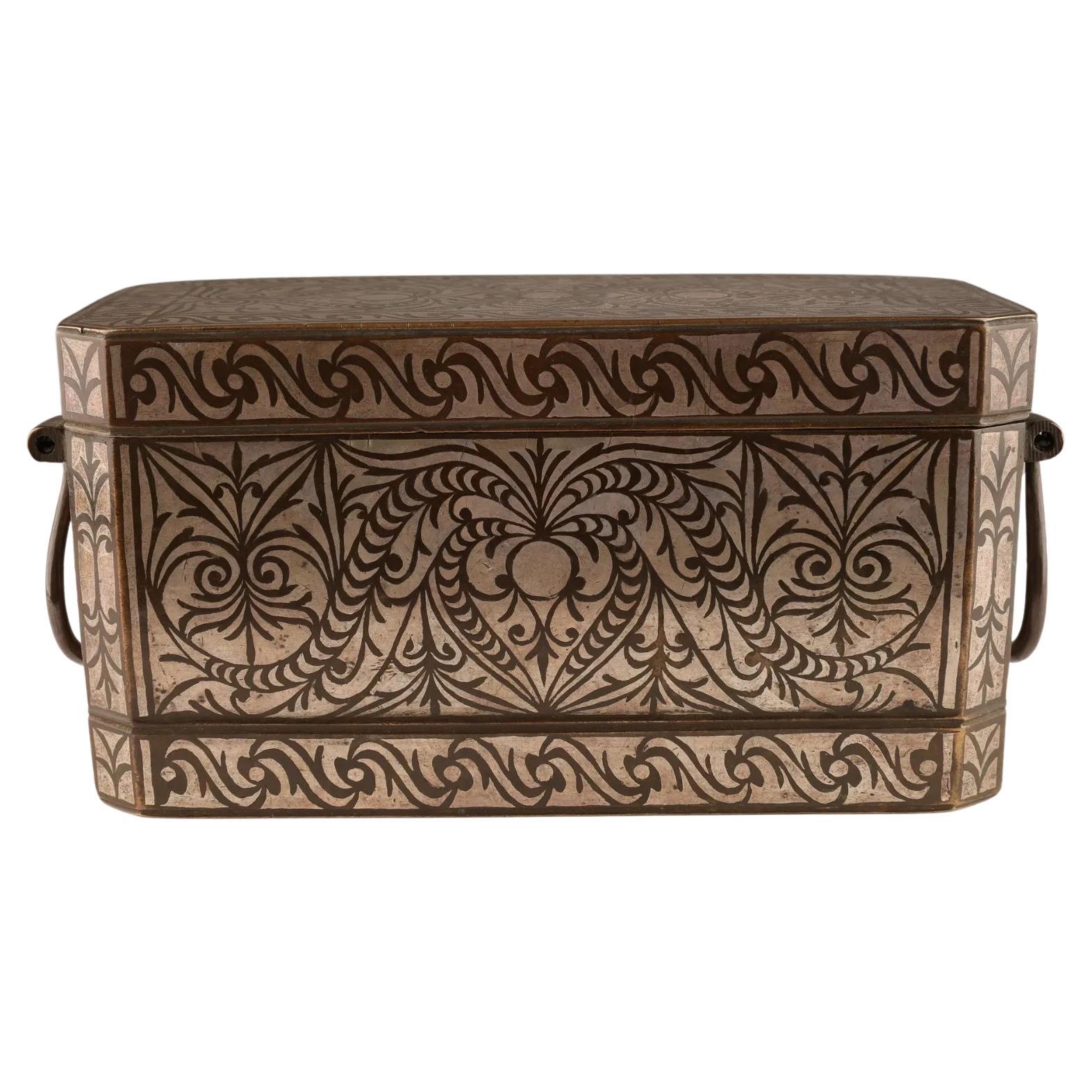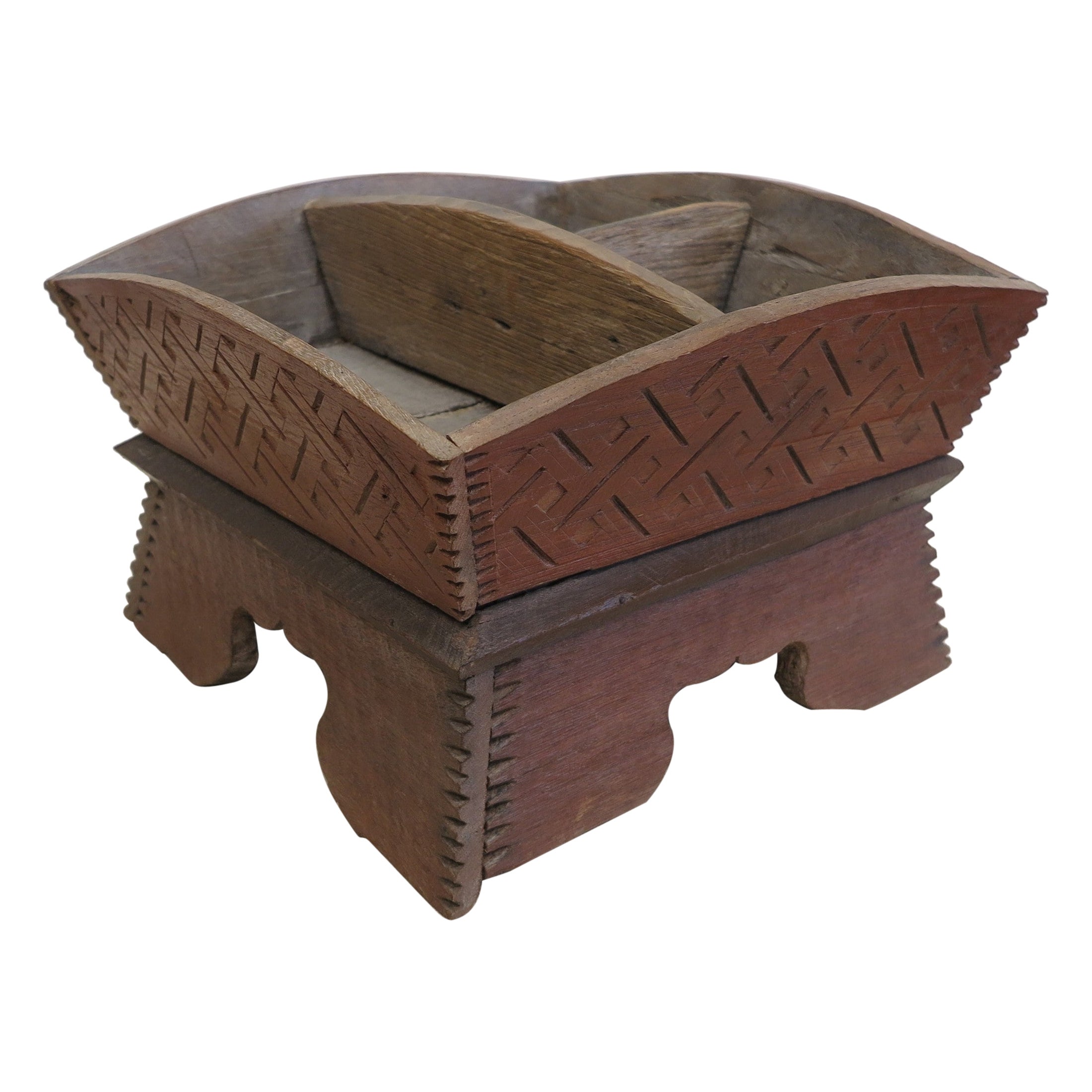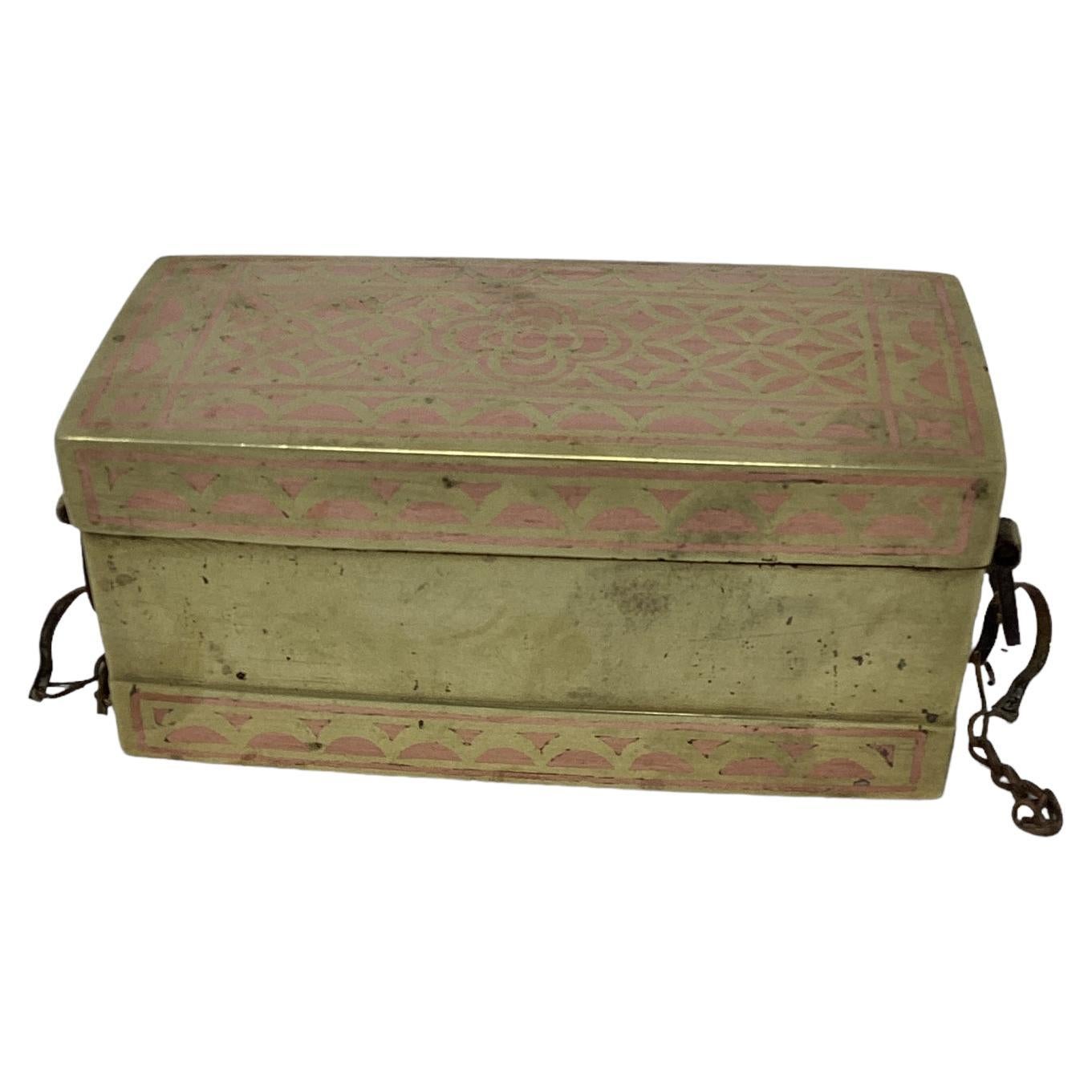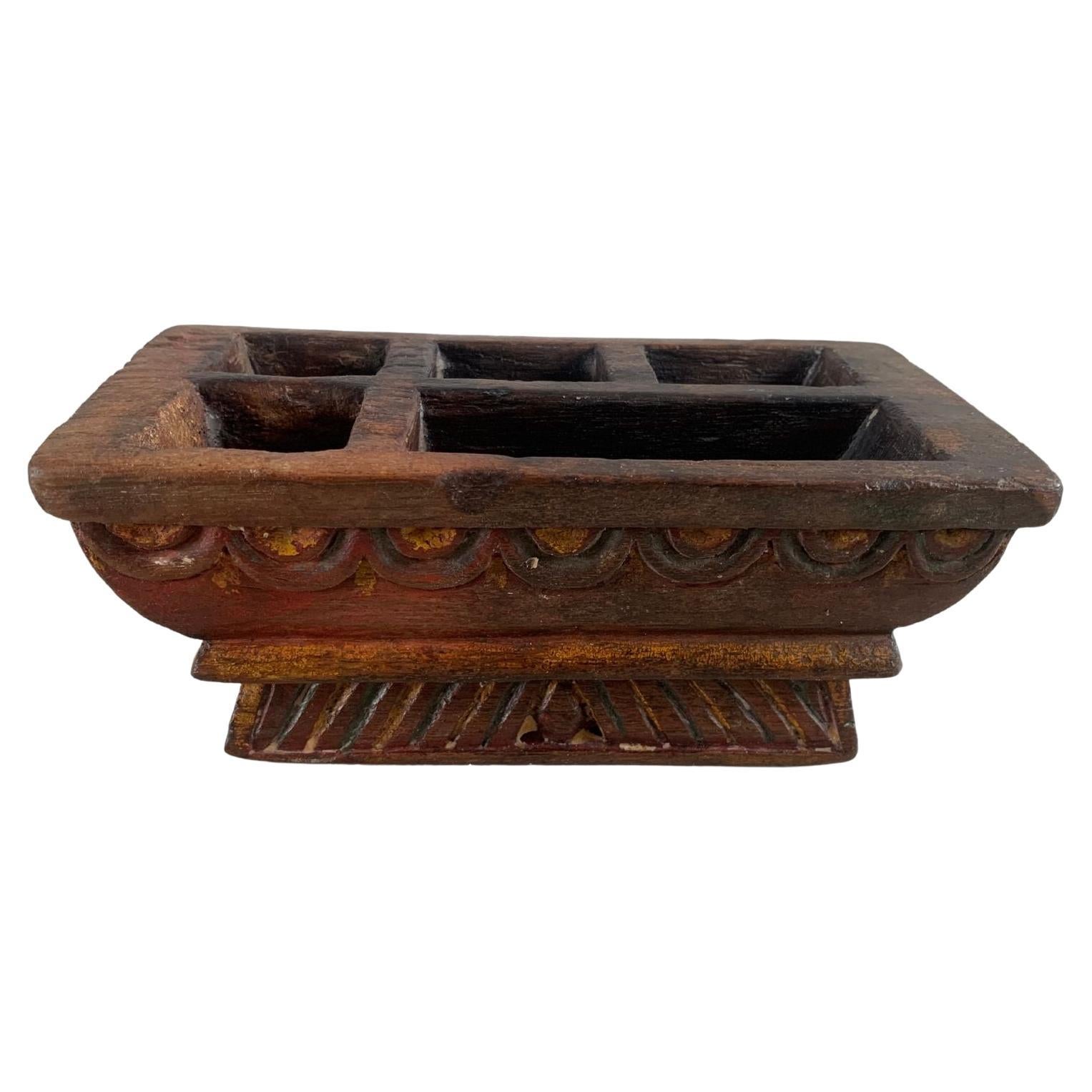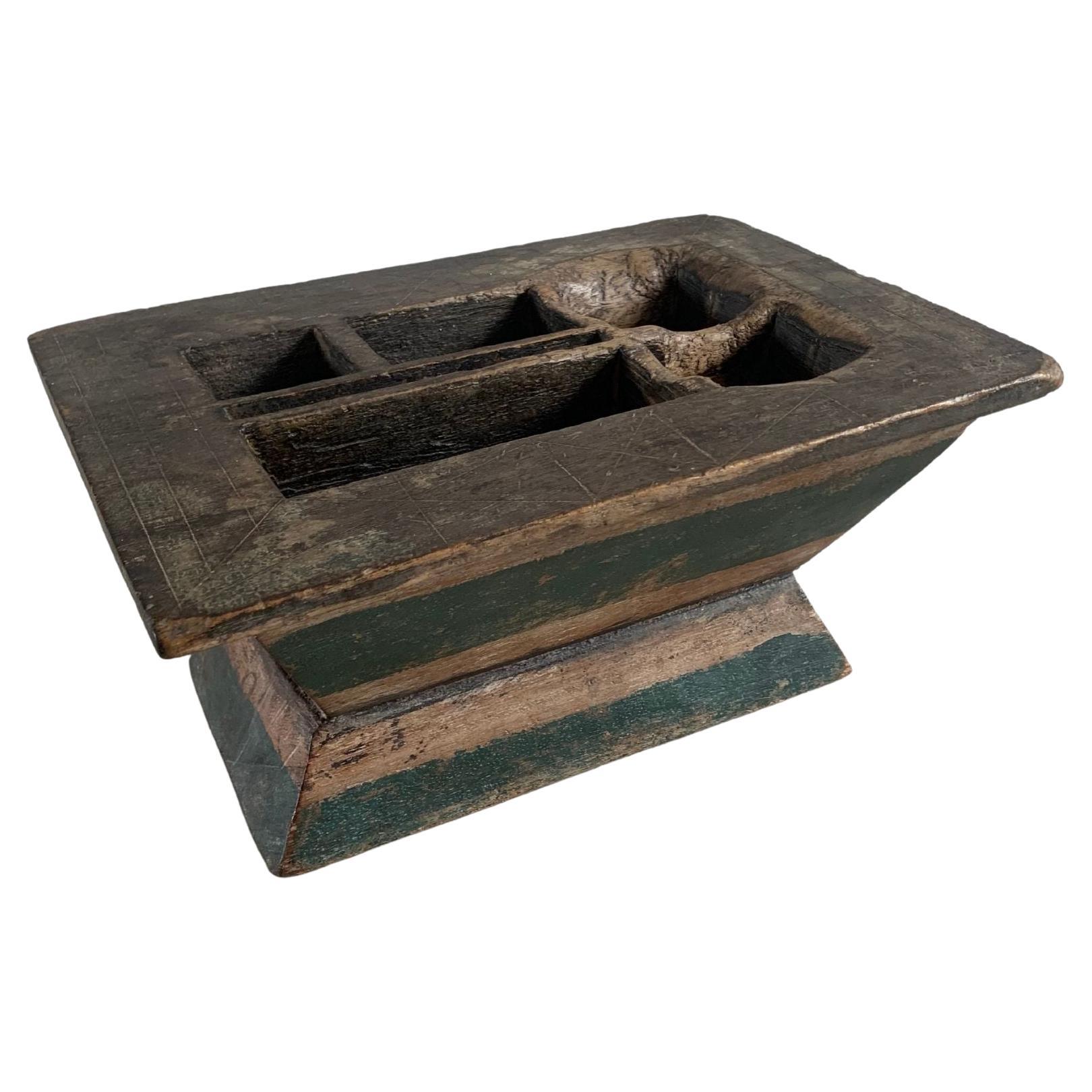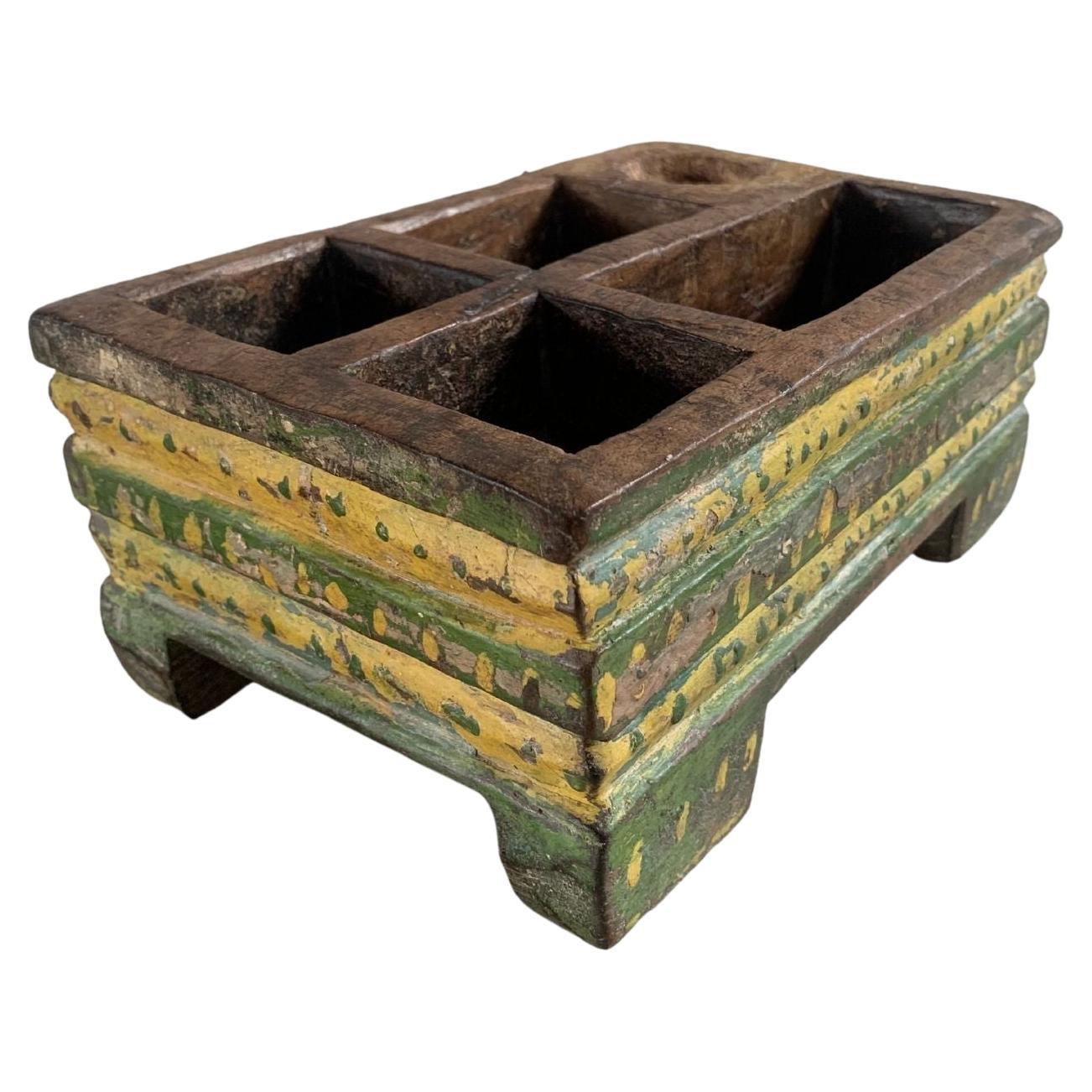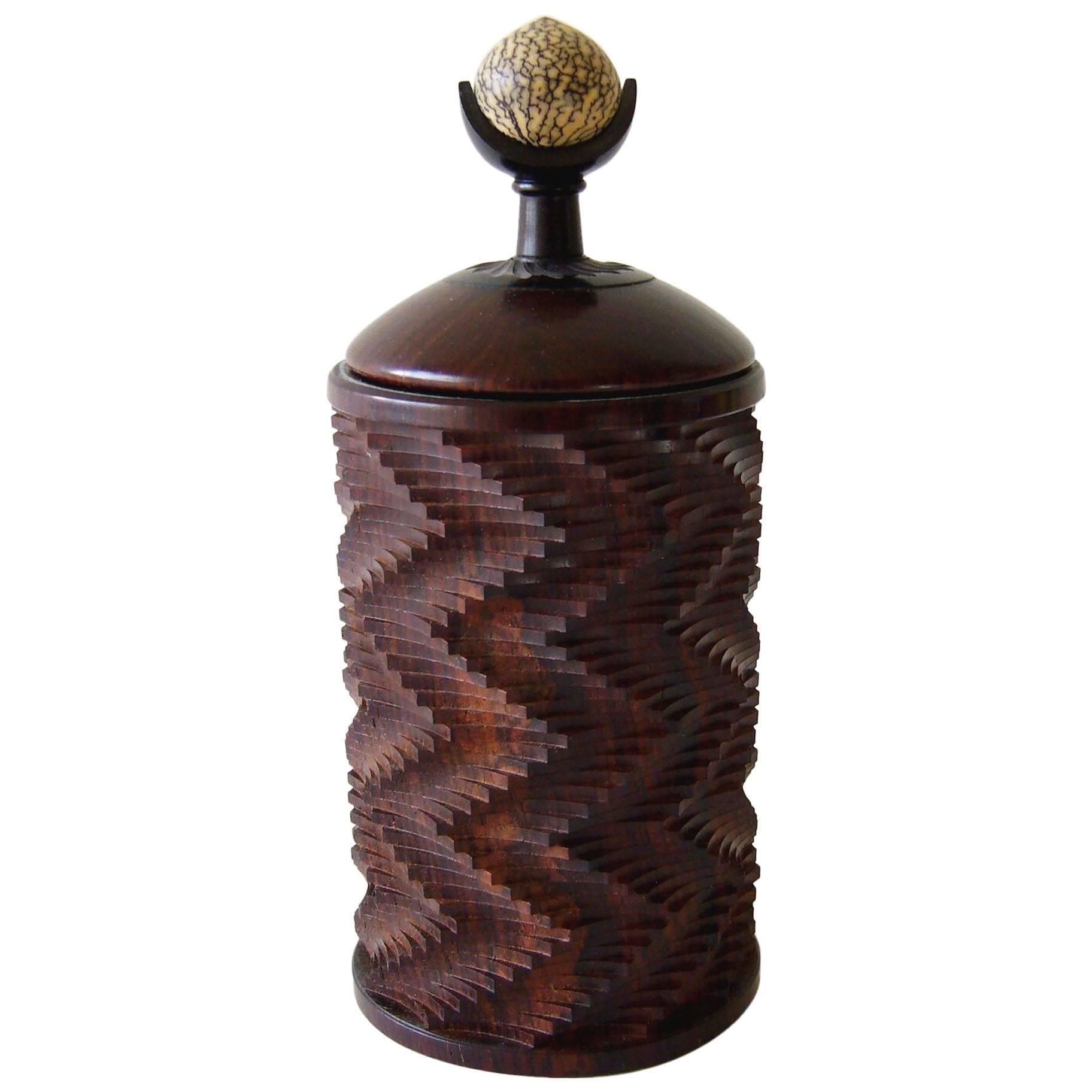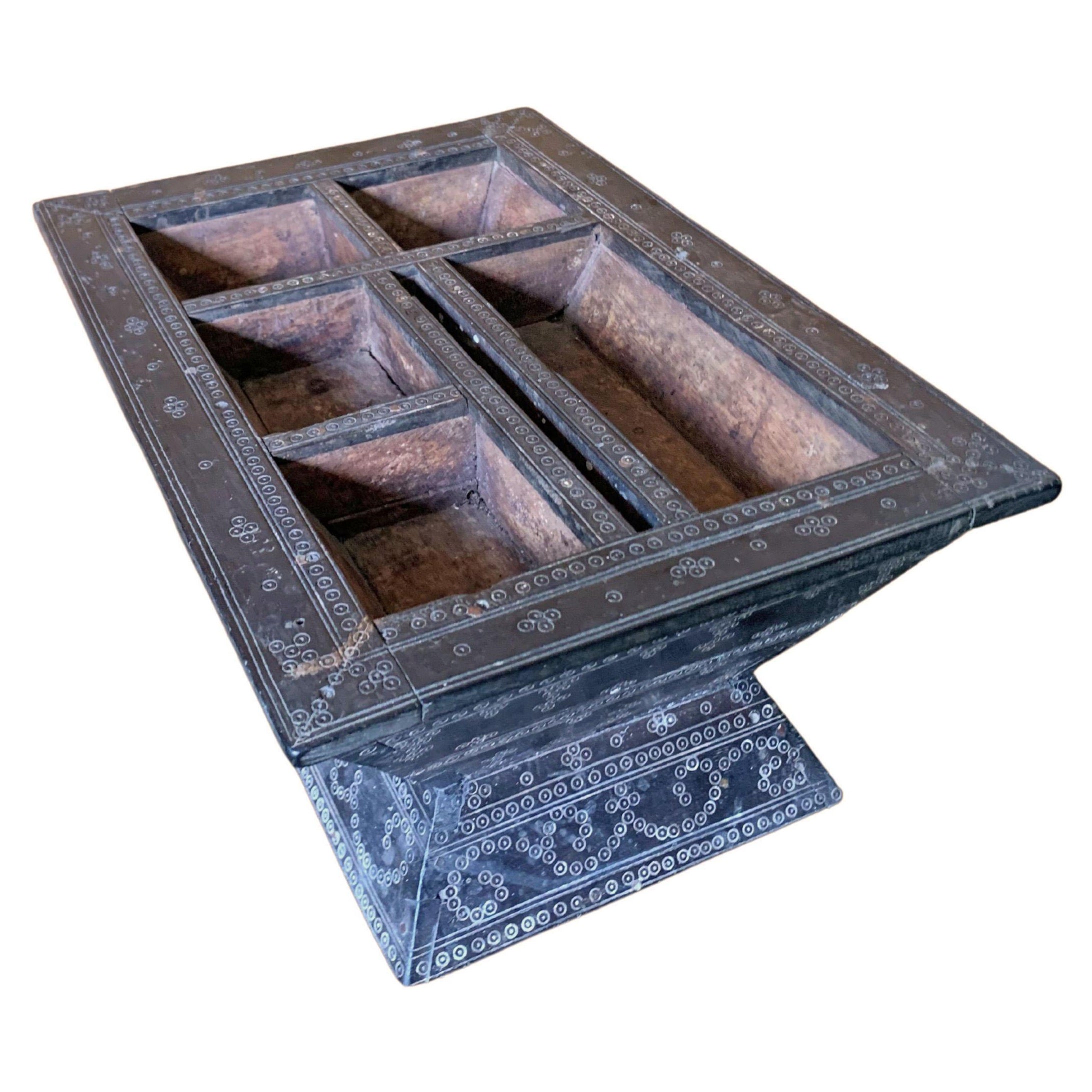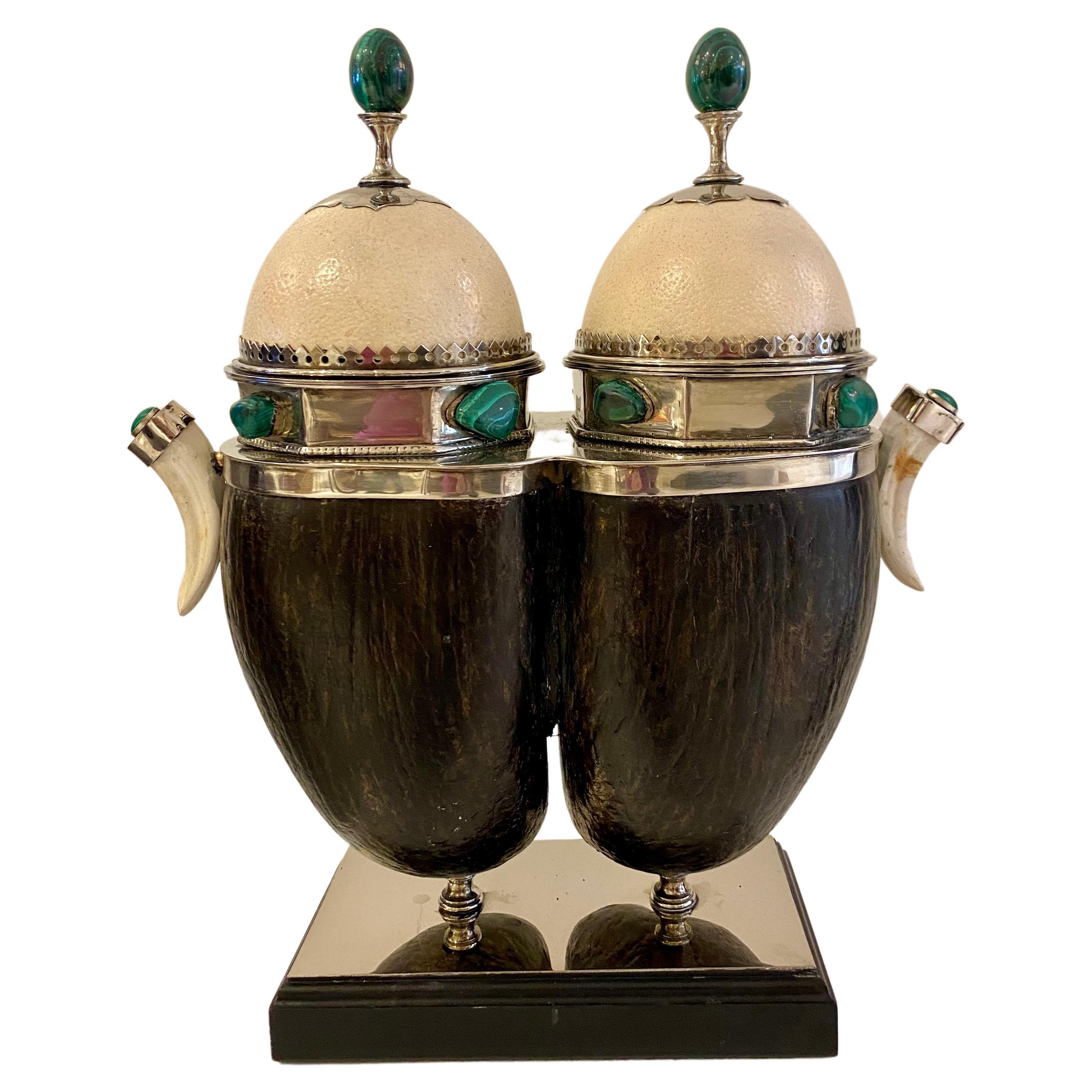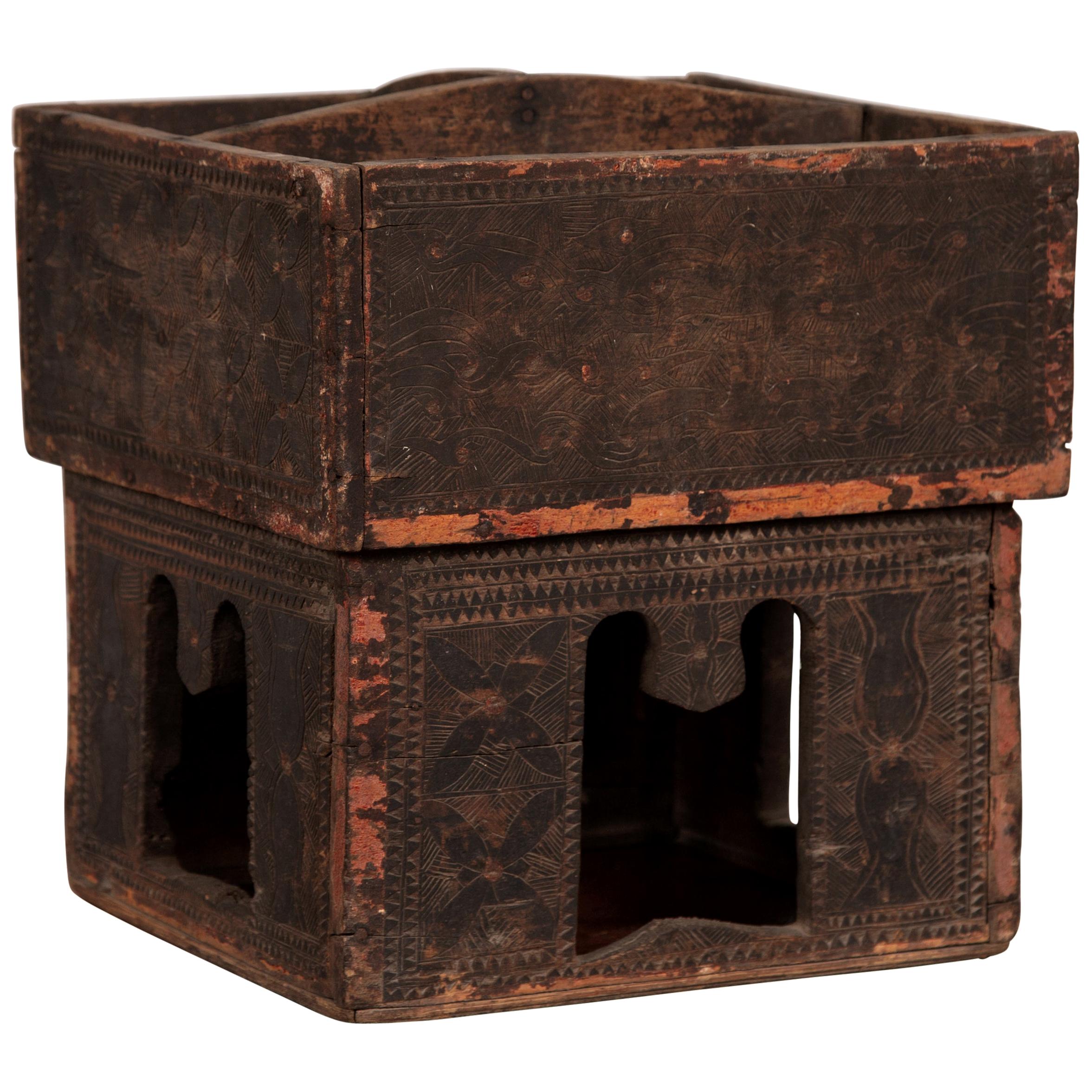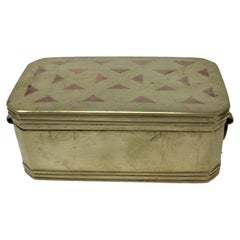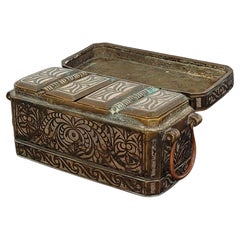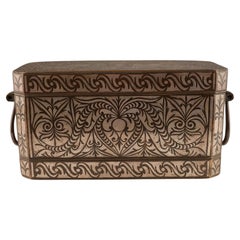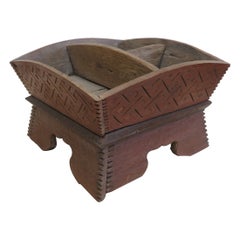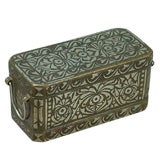
Silver Inlaid Betel Nut Box
View Similar Items
1 of 5
Silver Inlaid Betel Nut Box
About the Item
Betel nut, for those unfamiliar, is a mild stimulant that is chewed throughout the Asian continent. The almost ceremonial and habitual chewing of the betel nut usually involves four ingredients: areca nut (bunga), fresh pepper leaves (buyo), powder lime (apug), and damp tobacco leaves. The white residue on edge is slaked lime (Calcium Hydroxide) which releases the alkaloid in the Betel Nut.
This is a fine old box made in the early 20th century. Both the Fowler Museum at UCLA (catalog item number X79-15a,b) and the Smithsonian Institute (museum catalog number 383314) have very similar examples of this same type of betel box in their collection.
Dimensions are 5.75 inches x2.75 inches x 2.75 inches.
- Dimensions:Height: 2.75 in (6.99 cm)Width: 5.75 in (14.61 cm)Depth: 5.75 in (14.61 cm)
- Materials and Techniques:
- Place of Origin:
- Period:
- Date of Manufacture:Circa 1900
- Condition:excellent with only minor silver loss.
- Seller Location:San Francisco, CA
- Reference Number:1stDibs: U0901058476260
Authenticity Guarantee
In the unlikely event there’s an issue with an item’s authenticity, contact us within 1 year for a full refund. DetailsMoney-Back Guarantee
If your item is not as described, is damaged in transit, or does not arrive, contact us within 7 days for a full refund. Details24-Hour Cancellation
You have a 24-hour grace period in which to reconsider your purchase, with no questions asked.Vetted Professional Sellers
Our world-class sellers must adhere to strict standards for service and quality, maintaining the integrity of our listings.Price-Match Guarantee
If you find that a seller listed the same item for a lower price elsewhere, we’ll match it.Trusted Global Delivery
Our best-in-class carrier network provides specialized shipping options worldwide, including custom delivery.You May Also Like
Antique Brass and Copper inlaid Betel Nut Box
Located in Chapel Hill, NC
Antique Philippine Brass and Copper inlaid Betel Nut Box. The top lifts to reveal 2 hinged compartments that held the betel leaf, areca nut. Top is ...
Category
Antique 1870s Decorative Boxes
Materials
Brass, Copper
Antique Southeast Asian Filipino Maranao Silver Inlaid Brass Betel Nut Box
Located in Forney, TX
A scarce fine quality antique silver-inlaid solid brass betel nut box (Lutuan), dating to the second half of the 19th / early 20th century, hand-crafted in Mindanao, Philippines.
Boxes such as this were used to store the areca nut (also known as the betel nut) which would be wrapped in a betel leaf with lime paste and other ingredients, often tobacco, for chewing. Similar to the European tea caddy, these boxes often served as a way to impress while showing off ones wealth.
Betel chewing was prevalent in the southern Philippines as in much of the rest of Southeast Asia. Wealthier Maranao families on Mindanao were able to afford elaborate silver-inlaid brass betel boxes such as this example. Such boxes were used to show off to guests and from which they were offered betel and the other component such as leaves and lime to make up the betel quid.
Rare large size, most extant examples of such boxes tend to measure around 5 inches in length. At slightly more than 7.75 inches the example here is larger than most.
The distinctive decorative box features a very heavy strong-box like rectangular shaped chest form with canted corners, copper handles, and a conforming hinged lid, lifting open to reveal an interior divided into three compartments covered by four hinged lids. Each of these doors is inlaid with silver in stylized orchid flower patterns.
Exceptionally executed throughout, the arabesque silver inlaid exterior is decorated to the top with a large orchid motif within scrolling obid-obid (stylized rope) borders. The front, back and sides are inlaid with sets of stylized tail feathers of the sari-manok bird beneath which are unusual, highly stylized whimsical zoomorphic faces that appear like cat or tiger faces. (Such stylisation is accounted for by Southeast Asian Islamic preferences to avoid the overt and this potentially idolatrous representation of animal and human forms. Designs such as these are drawn from a local design repertoire that has its origins in wood carving.
Although the spread of Islam in the Philippines began in the 14th century, mostly through the influence of Muslim merchants from the western Malay Archipelago, decorative arts in this design remain exceptionally rare. This lutuan represents a fine example of Islamic metalwork from the most eastern outreach of Islamic art and civilisation: Mindanao island being significantly further east than even China – artwork from Islamic Southeast Asia remains chronically under-represented in the world’s major collections of Islamic art.
PROVENANCE / ACQUISITION
Acquired from highly reputable auction house, Austin Auction Gallery, established 1983, Austin, Texas.
References
Brownrigg, H., Betel Cutters...
Category
Antique 19th Century Philippine Islamic Decorative Boxes
Materials
Silver, Brass, Bronze, Copper
Antique Philippines Silver Inlay Betel Nut Box
Located in Montreal, QC
This is a fine example of an early 20th C rectangular bronze betal nut box with beautiful and elaborate silver inlay from Mindanao in the Philippines. The box has a handle on each si...
Category
Antique Early 1900s Philippine Decorative Boxes
Materials
Silver
Hill Tribe Betel Nut Box
Located in New York, NY
A betel nut box. Hill Tribe Betel Nut Box, from the Hill Tribes that live amongst Thailand and Loa borders in the mountain hills. Hand made of hard wood ...
Category
20th Century Tribal Decorative Boxes
Materials
Wood
Antique Brass and Copper Betel Nut Box
Located in Chapel Hill, NC
Antique Philippine Brass and Copper Betel Nut Box. The top lifts to reveal 2 hinged compartments that held the betel leaf and areca nut. Inlaid in c...
Category
Antique Late 19th Century Philippine Tribal Decorative Boxes
Materials
Brass, Copper
Betel Nut Box from Java with Polychromed Finish, Indonesia, c. 1900
Located in Jimbaran, Bali
Betel Nut is consumed on a daily basis in a large portion of the Indonesian Archipelago. In Java, betel nut was offered as a sign of respect and hospitality when people would visit o...
Category
Early 20th Century Indonesian Tribal Decorative Boxes
Materials
Hardwood
$260 Sale Price
20% Off
Free Shipping
Recently Viewed
View AllMore Ways To Browse
Onyx Animal Figurines
Wood Sculpture Boat
Italian Neoclassical Marble Sculpture Of Venus
Ancient Egyptian Sculpture
19th Century Bronze Goddess Sculpture
Japanese Bronze Statue
Carved Mask Tibetan
Brass Napoleon Statue
Pair Of Murano Glass And Sterling Silver Clowns
James Hunolt
19th Century Diana Sculpture
Sea Shell Sculpture
Mid Century Mannequins
Roy Ledgard
Blenko Penguin
Royal Dux Swan
Seahorse Candleholder
1984 Austin Prod Inc
